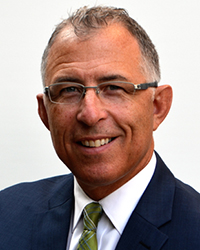The dynamic nature of today’s energy sector makes it virtually impossible to predict exactly how procurement and management of this commodity will operate in 20 – or even 10 – years. But there’s little doubt that a significant paradigm shift is well underway. And it is one that will most certainly bring big benefits to energy users today – and several years from now – as more robust competition emerges in the market.
So what’s driving this change? Three distinct forces: The shale gas boom, the greener and cleaner direction of energy policy, and the digital revolution.
The Shale Gas Boom The enormous growth in domestic shale gas production has spawned unprecedented investments in natural gas generation, as well as gas-intensive manufacturing and supporting infrastructure. Despite the fact that we are a full decade into the boom, production levels keep ticking upwards as demand increases for this cleaner energy source. In fact, analysts project that by 2030 natural gas production will likely double from current levels.
Today, shale gas constitutes 45% of the domestic gas supply. LNG exports are expected to continue to balance the supply, but that may be challenged if a low oil price environment persists. Aside from this critical factor, most of the current market dynamics have – and are expected to continue to – put a downward pressure on natural gas prices.
Greener Energy Policy The lower cost of natural gas, coupled with rulings from the Environmental Protection Agency that further support cleaner energy sources, is driving the retirement of a number of coal and oil generation plants. This, in turn, has put a heightened focus on expanding production of renewable and less carbon-intensive sources.
The Digital Revolution As the adage goes, knowledge is power. And advancements in digital solutions are reinforcing that truth as more data is put at the fingertips of end users, supporting more informed decisions for managing energy consumption and costs.
The rise of the digital revolution – coupled with the dropping price of solar energy and the declining cost of other distributed generation options such as battery storage – has created an empowered energy consumer, one who is able to both produce and consume power. These “prosumers” have reinforced the value of continuous innovation in the energy sector and the need for ongoing business model evaluation.
What’s more, the millennials, the generation of consumers who have collectively driven the push toward mobile app engagement, are creating a higher expectation in service, quality, ease of use, and personal customization among all consumers in all major market sectors, including energy.
These three intersecting forces are creating a significant case for change.
Buyers are making more informed, environmentally responsible decisions, thanks to advancements in data integration, cleaner energy sources, and opportunities to curtail consumption. And suppliers must respond with integrated solutions that leverage everything from solar energy to distributed generation to help consumers maximize market opportunities.
It is for these reasons that commercial and industrial customers are wise to consider suppliers who can essentially be a “one-stop shop,” offering the depth and breadth of products large users need, backed by the service they expect, along with the cutting-edge tools and resources available in today’s data-driven environment.
In the end, our changing energy landscape is making it increasingly critical for businesses to recognize and understand the new risks, rewards, and opportunities associated with purchasing electricity in the current market.
Knowing your organizational goals and drivers is key to determining which supplier best meets your needs. Talk with a broker like Secure Energy, who has extensive relationships with retail providers at the forefront of energy’s shifting paradigm. As seasoned energy professionals, we can help you understand the options, determine the right supplier, and build the best integrated strategy for your business.
Jamie Collins is the senior vice president of business development for Secure Energy Solutions, East Longmeadow, Mass.







